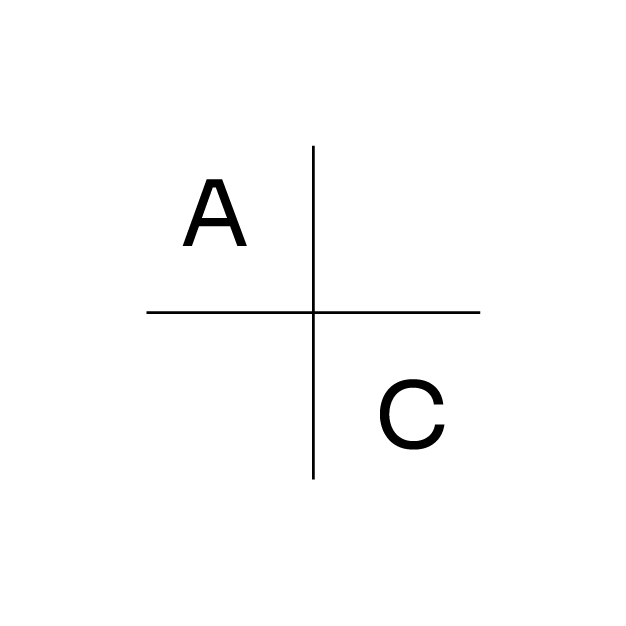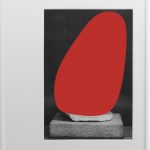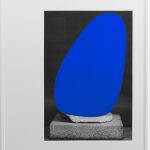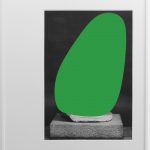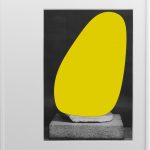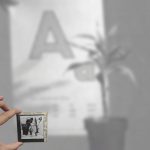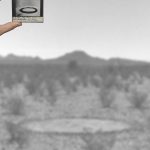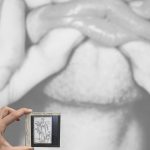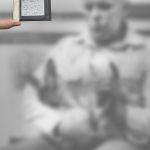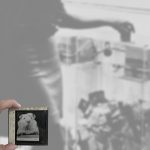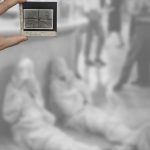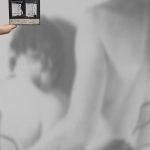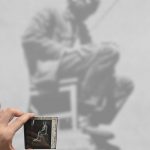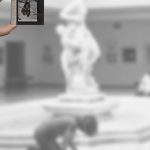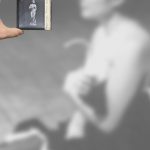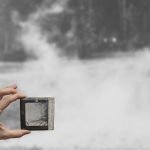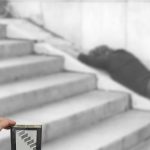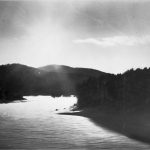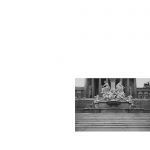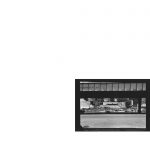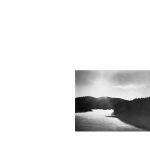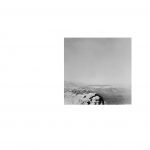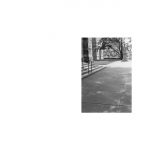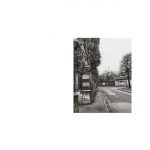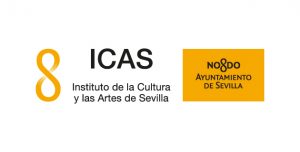IRA LOMBARDÍA. THE REST IS HISTORY
13.04.21 >30.07.21
Lombardía’s artistic practice emerges from the broad field of photography to focus on the transformation of the postmodern paradigm related to digital visual culture. In particular, she reflects on the impact and value of the documentation of photographic art, on how these images are produced, distributed and consumed, and how these fluctuations affect the meanings and ideologies that define our idea of art.
Her third solo exhibition at Alarcón Criado Gallery, “The Rest is History” presents 3 new unpublished projects, along with the project “Visual Strike” from 2012. This exhibition serves as a preview to the artist’s first solo exhibition in the United States, curated by DJ Hellerman and to be held in September 2021 at SCAD Museum in Savannah, GA.
These three new projects arise from the research the artist has been immersed in for years and which she summarises as follows:
“I am not interested in photography as an image, as visual content. What interests me about photography is everything that is not the image: the flows, the dynamics, the hierarchies, the “status” and, particularly, photography as a theoretical and ideological support for other artistic practices. I am interested in the impact that the photographic medium has had on the arts and because of this, I have focused on the study of photography as a means of artistic documentation, something I find fascinating. If during the 19th century photography played a transcendental role in the dissemination of artistic objects and was the origin of the dichotomy between “the original and the copy”, during the beginning of the 20th century, it was “responsible” for the emergence of the artistic avant-garde and conceptual art, as in the 1970s when the new categorisation of photography as an index gave rise to the dematerialisation of art and especially of sculpture. This displacement of the artistic object in the face of the inclusion of the body cannot be understood apart from photographic theory. In fact, the history of contemporary art cannot be understood without photographic practice.
The challenge now is to explore the new photographic uses that have arisen thanks to digital photography, the internet and social networks. We cannot ignore the impact that these new practices have on all aspects of our lives, including art. The rules of the game have changed and they are here to stay; as an artist I feel a responsibility to study the past in order to be able to work on the conflicts of the present. The idea of aura or even index is obsolete, and that leaves a theoretical vacuum. For the first time photography has gained ground over the textual, and images are ahead of theory.”
“The Rest is History” / Chroma Art Prints / 2021
This research was central to the process of technical innovation that has led to the creation of what the artist has defined as “Chroma Art Prints” which involves the combination of traditional techniques such as photoengraving – widely used during the 19th and 20th centuries for the reproduction of artistic documentation in books and copies – with other mechanical reproduction techniques that were very common during the 20th century such as screen printing and digital interaction, which allows the pieces to be altered by users.
“In “The rest is History,” the pieces are based on the appropriation of historical archives, which are then altered with a screen-printed stain. This iconoclastic act enables the creation of a screen that allows the images to be edited in a very simple way. In this way, a two-dimensional work can incorporate not only other images, but also moving images. The piece itself is not only a hybrid, it goes beyond that, it poses a conflict, as it is the sum of opposites: it is aura and it is copy, it is an “art object” and it is dematerialised, it is finished and it is not, as it is open to manipulation by the spectators. These pieces are everything and they are nothing.”
“How to Clean Backgrounds” / 2021
“If during the 1970s photography was based on the idea of index, today this concept seems obsolete. That connection of causality, which allowed photography to form part of this symbolic category, has vanished with the rise of digital tools and editing softwares. There is no longer a latent image, and light leaves no permanent imprint on any analogue medium.”
In “How to Clean Backgrounds,” Lombardía reappropriates the popular title of one of the many Photoshop tutorials that can be found online, to apply tools such as the clone stamp tool, the magic wand, the patch or the corrective pencil, to well-known photographs documenting performances from the 1970s.
The process of “cleaning” would be the reverse of leaving a trace, any indication of passage or any kind of sign characteristic of the theory of the index, including the main protagonist: the artist. Thus, we find an empty Rue Gentil-Bernard in Fontenay-aux-Roses, France (possibly in reference to the piece “Leap into the Void” by Yves Klein, photographed in the same street). This new emptiness alters Harry Shunk’s original photograph and allows us to question the photographic nature and the idea of index. At the same time, the space is reactivated and can be re-interpreted, even inhabited.
“The “cleaning” of the images, which takes hours or even days depending on the photograph, is truly immersive and has had a profound effect on my work. In some ways I felt very much like Mierle Laderman Ukeles, since it was after all a “cleaning” job. At the same time it was conflicting, especially when I worked with archives of artists who I admire greatly but whose impact and dissemination on a historical level has been less than that of some others, especially those relating to women and Latin or African American artists. Manifesting their absence has a meaning and implications that go beyond space.”
“Speechless”(The perception of the Visual World ) / 2021
In 2018, at the Aby Warburg Institute in London, I discovered a metal filing cabinet containing numerous glass slides. With no established order, without any documentation and even with different formats, I was finally able to connect several images that seemed to refer to the same lecture and whose first slide reproduced the cover of the book The Perception of the Visual World by the American psychologist James J. Gibson. Other slides showed the illustrations of the book, but there were also other images about art history or even two slides as memes and two slides that referred to a second book Eye, Film and Camera in colour Photography by R.M. Evans.
Despite having the books and handwritten notes on each of the slides, in the absence of any established numbering or order, and without any recording or phonographic record to serve as a record, there was no way of knowing what was the content that ordered and connected these images, or even who the author was. The only thing that seemed clear was that the materiality of these slides printed on glass paradoxically conflicted with the immateriality of a lost discourse.
“This conflict, this tension between the tangible and the immaterial, between the document and the referent, between images and words, between photography as index and language as structure, materialised in a series of 12 pieces. In each of them, in a glass case, two images are placed in contrast: in the foreground, printed on glass, we can see a life-size reproduction of the photographs I took at the Warburg Institute, where my hand holds the slides one by one. In the background, we see, out of focus, images that reproduce fragments of photographic documentation, artistic pieces from the 1970s in which art without support was experimented on, of which only the photographic or audiovisual record of the action carried out remained”.
“Visual Strike” / 2012
In a contemporary world saturated with both objects and images, and in which most of the images in circulation have no physical existence, Visual Strike (2012) updates this act of resistance to artistic overproduction by focusing it specifically on cyberspace. In May 2012, Lombardía went on “visual strike” and removed all the images of her artworks from her website. During the thousand-day strike, visitors to her website found a manifesto explaining what had led her to take this course of action, including the need to do away with visual consumerism and iconic bulimia, as well as pressing for an ecology of images. Lombardía sees Visual Strike not only as an action that creates a break for tired eyes but also as a rebellious act of resistance.
“They are so many images that they have practically lost their value, so that they are too much, they lose their strength,, their meaning, so that no breath remains, drawing everything, absolutely everything.
And now my “inspiration” has asked me to stay almost silent, it has asked me to pronounce only one Word, it has asked for a break for my gaze, for an almost blank space, it has requested a “very small”, a tiny something that says as much as silence and that’s what I’m willing to offer”.
